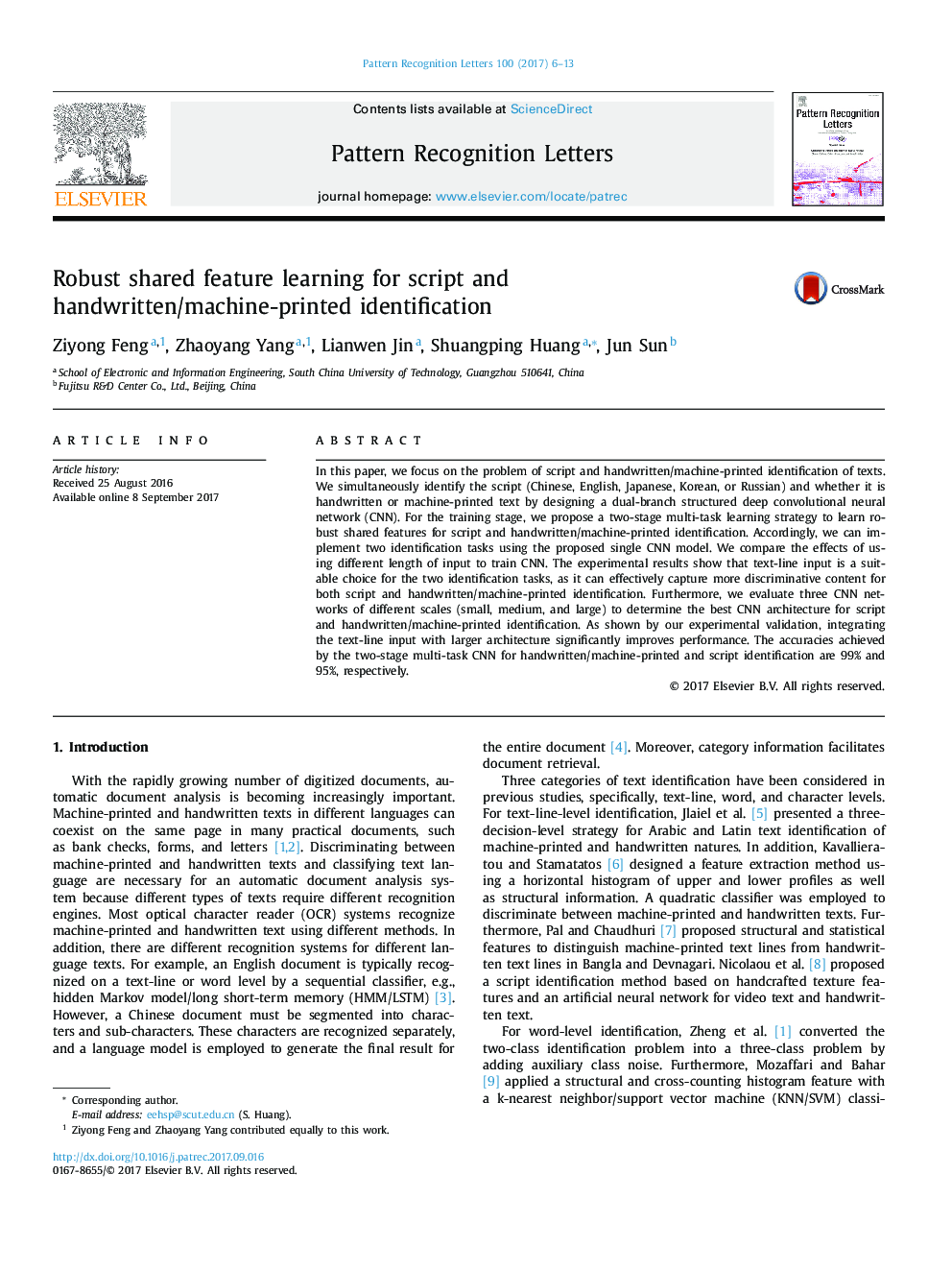| Article ID | Journal | Published Year | Pages | File Type |
|---|---|---|---|---|
| 4969962 | Pattern Recognition Letters | 2017 | 8 Pages |
Abstract
In this paper, we focus on the problem of script and handwritten/machine-printed identification of texts. We simultaneously identify the script (Chinese, English, Japanese, Korean, or Russian) and whether it is handwritten or machine-printed text by designing a dual-branch structured deep convolutional neural network (CNN). For the training stage, we propose a two-stage multi-task learning strategy to learn robust shared features for script and handwritten/machine-printed identification. Accordingly, we can implement two identification tasks using the proposed single CNN model. We compare the effects of using different length of input to train CNN. The experimental results show that text-line input is a suitable choice for the two identification tasks, as it can effectively capture more discriminative content for both script and handwritten/machine-printed identification. Furthermore, we evaluate three CNN networks of different scales (small, medium, and large) to determine the best CNN architecture for script and handwritten/machine-printed identification. As shown by our experimental validation, integrating the text-line input with larger architecture significantly improves performance. The accuracies achieved by the two-stage multi-task CNN for handwritten/machine-printed and script identification are 99% and 95%, respectively.
Related Topics
Physical Sciences and Engineering
Computer Science
Computer Vision and Pattern Recognition
Authors
Feng Ziyong, Yang Zhaoyang, Jin Lianwen, Huang Shuangping, Sun Jun,
